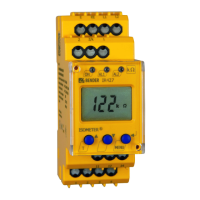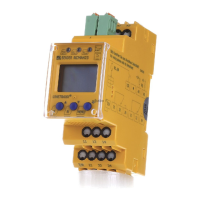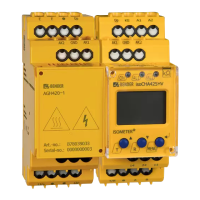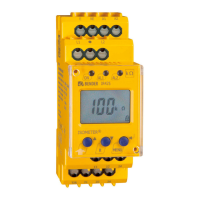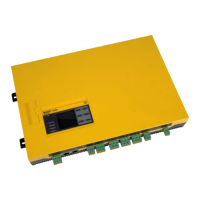Serial interfaces
55
TGH1361en/11.2009
6.4 BMS protocol (IRDH275B)
This protocol is an essential part of the Bender Measuring Device Interface.
Data transmission generally makes use of ASCII characters.
Interface data are:
z Baud rate:9600 baud
z transmission:1 start bit, 7 data bits, 1 parity bit, 1 stop bit (1, 7, E, 1)
z Parity:even
z Checksum:sum of all transmitted bytes = 0 (without CR and LF)
The BMS bus protocol works according to the MASTER-SLAVE principle.
That means that one device represents the MASTER while all other bus nodes
are SLAVES. It is important that only one MASTER is present in each net-
work. All bus nodes are identified by a unique address. The MASTER scans
all other devices on the bus cyclically, listens to their signals and then carries
out specific commands. Bus address 1 must be assigned to the Master, thus
to one of the IRDH275B devices.
6.4.1 BMS Master
A Master can query all warning and operating messages from a slave.
If the bus address 1 has been selected for one IRDH275B, this device auto-
matically represents the Master, that means that all addresses between 1 and
150 are cyclically scanned via the BMS bus for alarm and operating messages.
If the Master receives no answer from five subsequent addresses, the scan-
ning cycle is started again. If the Master recognizes incorrect answers from a
slave, the fault message "Fault RS485" is issued by the Master.
Faults may be caused when:
z addresses are assigned twice
z a second master exists on the BMS bus
z interference signals occur on the bus lines
z a defective device is connected to the bus
z terminating resistors are not activated
Fault RS485
Rs=011k
W . H
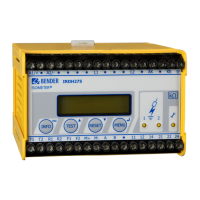
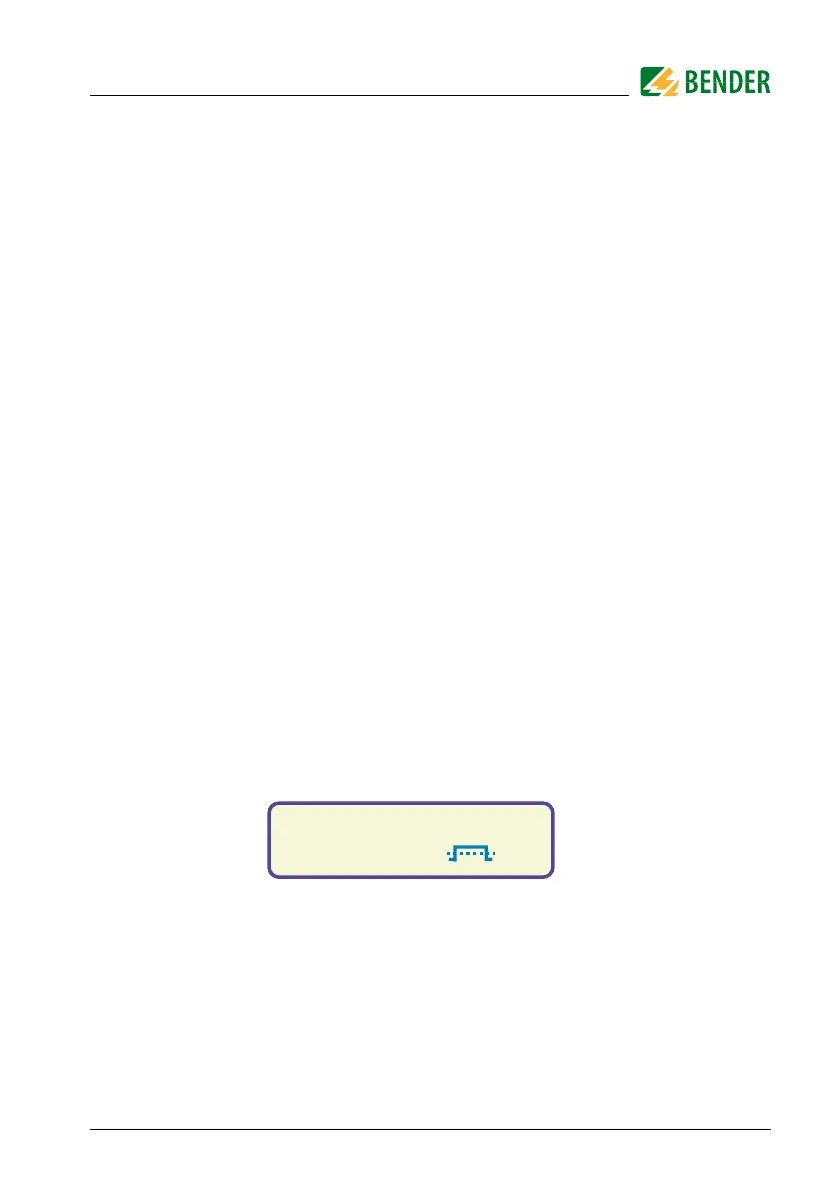